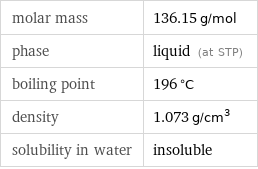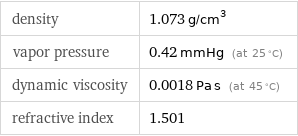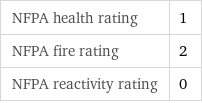Input interpretation

phenyl acetate
Chemical names and formulas

formula | CH_3COOC_6H_5 Hill formula | C_8H_8O_2 name | phenyl acetate IUPAC name | acetic acid phenyl ester alternate names | acetic acid, phenyl ester | acetic acid phenyl ester | acetylphenol | phenyl ethanoate mass fractions | C (carbon) 70.6% | H (hydrogen) 5.92% | O (oxygen) 23.5%
Lewis structure

Draw the Lewis structure of phenyl acetate. Start by drawing the overall structure of the molecule, ignoring potential double and triple bonds: Count the total valence electrons of the carbon (n_C, val = 4), hydrogen (n_H, val = 1), and oxygen (n_O, val = 6) atoms: 8 n_C, val + 8 n_H, val + 2 n_O, val = 52 Calculate the number of electrons needed to completely fill the valence shells for carbon (n_C, full = 8), hydrogen (n_H, full = 2), and oxygen (n_O, full = 8): 8 n_C, full + 8 n_H, full + 2 n_O, full = 96 Subtracting these two numbers shows that 96 - 52 = 44 bonding electrons are needed. Each bond has two electrons, so in addition to the 18 bonds already present in the diagram add 4 bonds. To minimize formal charge oxygen wants 2 bonds and carbon wants 4 bonds. Identify the atoms that want additional bonds and the number of electrons remaining on each atom: Fill in the 4 bonds by pairing electrons between adjacent highlighted atoms. Note that the six atom ring is aromatic, so that the single and double bonds may be rearranged: Answer: | |
3D structure

3D structure
Basic properties

molar mass | 136.15 g/mol phase | liquid (at STP) boiling point | 196 °C density | 1.073 g/cm^3 solubility in water | insoluble
Units

Liquid properties (at STP)

density | 1.073 g/cm^3 vapor pressure | 0.42 mmHg (at 25 °C) dynamic viscosity | 0.0018 Pa s (at 45 °C) refractive index | 1.501
Units

Thermodynamic properties

molar heat of vaporization | 43.2 kJ/mol specific heat of vaporization | 0.317 kJ/g critical temperature | 685.7 K critical pressure | 3.59 MPa (at STP)
Chemical identifiers

CAS number | 122-79-2 Beilstein number | 636458 PubChem CID number | 31229 PubChem SID number | 24846821 SMILES identifier | CC(=O)OC1=CC=CC=C1 InChI identifier | InChI=1/C8H8O2/c1-7(9)10-8-5-3-2-4-6-8/h2-6H, 1H3 RTECS number | AJ2800000 MDL number | MFCD00008699
NFPA label

NFPA label

NFPA health rating | 1 NFPA fire rating | 2 NFPA reactivity rating | 0
Safety properties

flash point | 76.67 °C autoignition point | 450 °C
Toxicity properties

RTECS classes | primary irritant